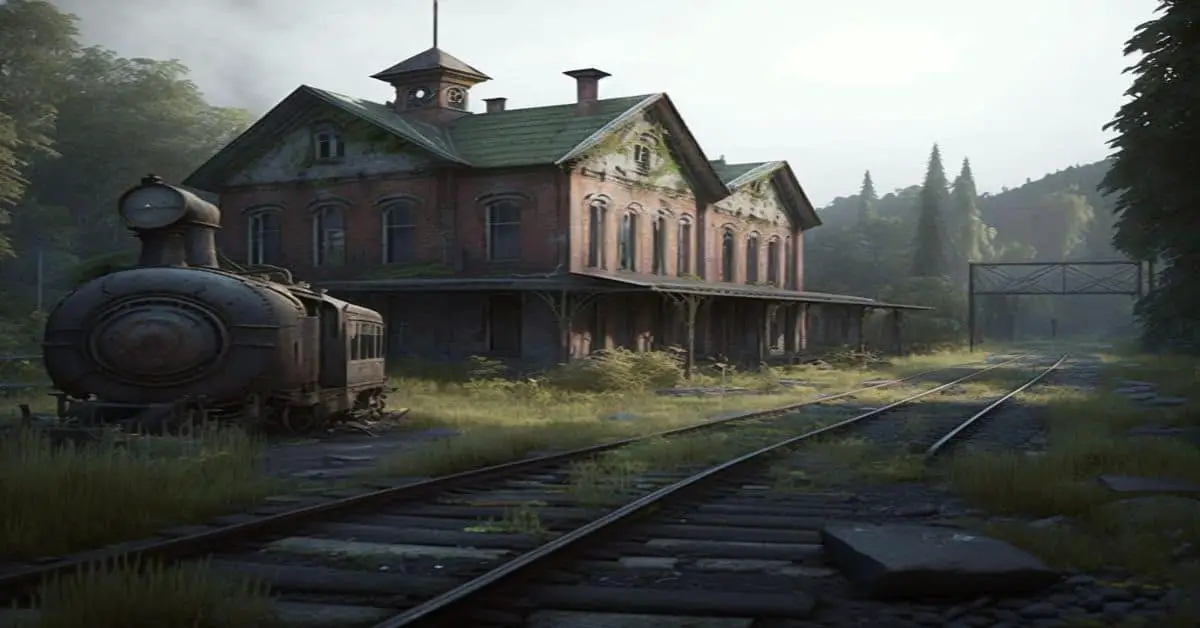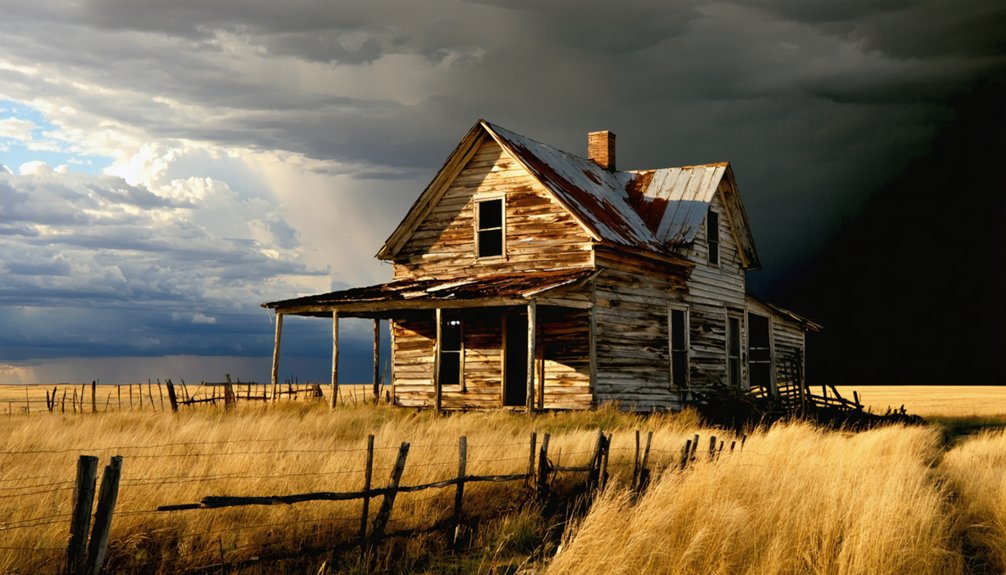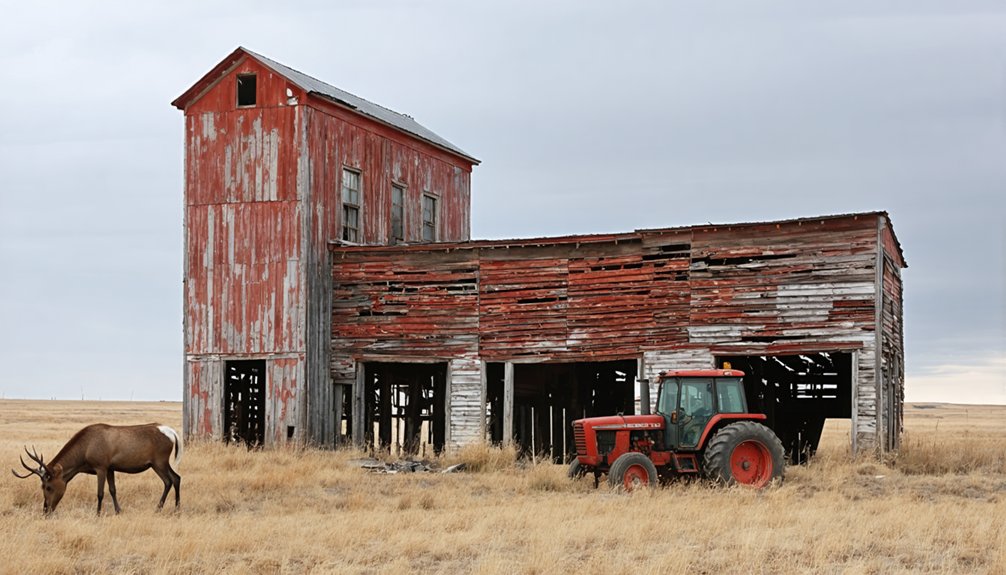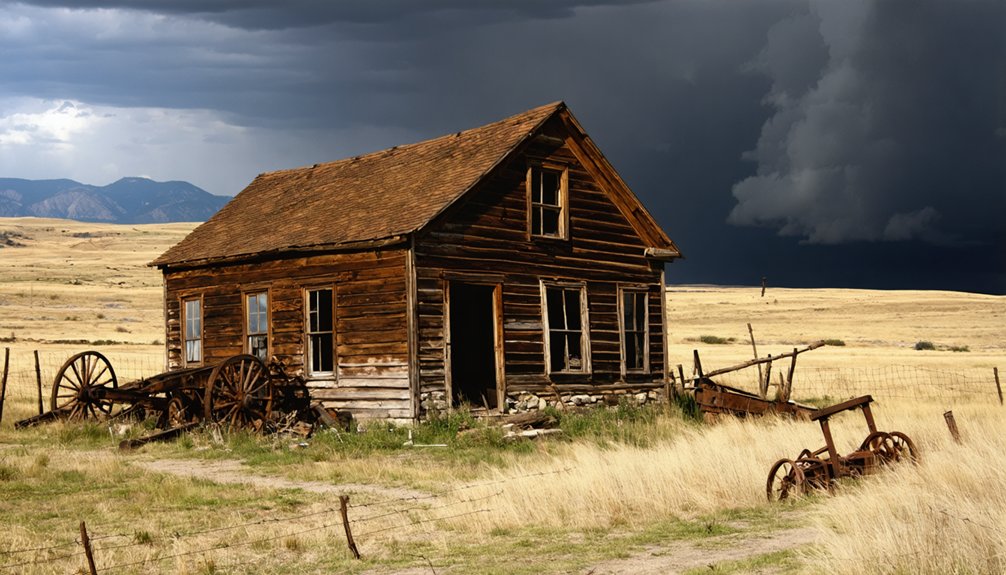South Dakota was declared the 40th state of the Union on November 2, 1889. Its primary economic activity is agriculture. First, it was a territory of the Native Americans. Then it passed into the hands of the French until finally, the United States bought the land. With all this process, it is inevitable that in South Dakota, we will find several ghost towns.
There are approximately 250 ghost towns in South Dakota. Rockerville, Mystic, Tinton, Okaton, Ardmore, Spokane, Etta, Pactola, and many more are the most famous. Each former town has its own story of success and demise.
These days, South Dakota benefits from agriculture and tourism. Undoubtedly, there is a lot of history to see in the state. If you want to include some ghost towns on your next visit, check out the suggestions we have for you.
Rockerville, South Dakota
Founded in 1876, Rockerville used to be a mining town. Its name comes from the tool they use to separate the gold from the stone. From 1950 to 1960, it was a tourist town due to its location on US Highway 16.
It is located 5.3 miles southwest of Keystone. The town became a ghost town in the 1990s due to the evolution of the state’s streets and the little traffic that began to transit through the city, which was soon nil.
In 2016, the town was burned due to a Rockerville Fire Department drill. However, some restaurants and lounges are still intact, and some houses were rebuilt to be visited by tourists. It is currently uninhabited.
Mystic, South Dakota
Twelve miles south of Hill City, we can find the ghost town of Mystic. Mystic used to be a mining town back in the day. It was founded in 1874 after a large deposit of gold was discovered. At its peak in 1879, approximately 100 people lived there. However, it did not last long. Soon, the gold began to deplete, and the miners began to migrate to places with more opportunities.
In 1900, a Chicago investor decided to invest in the Mystic mines, thus creating more buildings to house the workers. This action led to the building of a second railroad to transport gold and coal on a larger scale. Tourism began to develop in the 1920s.
After World War II, mineral demands changed, and the products coming out of Mystic were no longer a high need. In 1954, the town officially closed its post offices. Currently, the buildings are still intact but remain empty. Mystic is used as a path to hike and visit the town’s history through the years.
Tinton, South Dakota
Tinton is a ghost town located 13 miles east of Deadwood. It was a gold mining town established in 1876 and began producing tin. In 1904, the first post office was opened when Tinton’s mining company formed a city for its employees.
After World War II, the production and efficiency of the mines began to decline, and employees and companies began to migrate to other areas with better potential. In 1950, a fire destroyed the mill that kept the town’s economic activity active, causing the few remaining people to leave.
Currently, the mines were reopened by a private company and are operational. However, the buildings remain empty, and some structures have collapsed. It is not a tourist center, but you can still visit the town to see its history up close.
Okaton, South Dakota
Okaton is a town dedicated to agriculture. It was founded in 1906 to give railroad workers a place to live, but it was not inhabited for long. The closest city to Okaton is Murdo, which is 3.2 miles east.
In the 1980s, a family bought the abandoned city to capitalize on it as a ghost town. At the beginning of the adventure, the former village earned good profits. However, its appeal was lost, and visits began to decline.
Today there is still a tiny central store that serves visiting tourists. According to the 2010 census, approximately 40 people lived on farms. You can visit this small ghost town and see a few buildings, but the individual properties are privately owned.
Ardmore, South Dakota
Ardmore was a town founded in 1889 and used for railroad stops. The city was dry with undrinkable water. Ardmore survived by supplying acidic water to steam trains as they continued their journey, and crewmembers returned drinking water as part of the bargain. However, when the locomotives began to use other fuel alternatives, it was no longer necessary to stop in the small town to recharge.
The town tried to experiment with dry agriculture, but the attempt was unsuccessful. The town residents began migrating to other areas with more economic opportunities and better livelihoods. Only 16 people remained in Ardmore as of the 1980 census.
Currently, the town is abandoned, but former residents will gather for social meetings every two years. Ardmore is located one mile north of the South Dakota-Nebraska border. You can visit the city, but the houses remain locked since some former residents still store personal belongings in their former homes.
Spokane, South Dakota
The town of Spokane was founded in 1890. It is located 12 miles northwest of the city of Custer. In its beginnings, it was a mining city, fruitful in terms of materials such as iron, copper, zinc, and graphite.
It was a prosperous town, producing incredible profits over the years. However, the mines were exhausting their potential, and in the 1940s, the Spokane mine finally closed.
Currently, the town is completely deserted, and the only way to visit it is through a one-mile hike. Some buildings have collapsed and are in disrepair, while others were destroyed for national security. Still, the historic charm of the buildings left in this ghost town is worth the trip.
Balmoral, South Dakota
Balmoral, also known as Ragged Top, was a mining town founded in the 1880s. Schools, houses, and other amenities were established in the village for the families of mining employees. In 1915, operations ceased due to the difficulty of transporting the gold to the smelters.
The town is known as Preston and has its buildings intact. Although the town has no inhabitants, it is used as a hiking route and is open to tourists. The closest city to Ragged Top is Central City, which is 5.6 miles away to the east.
Conclusion
Most of South Dakota’s ghost towns were cities created by mining companies for their employees or towns that served as stops for steam trains to refill water. Some also served as farms and were self-sustaining.
Ghost towns in South Dakota are open to the public who want to visit. Still, most properties are private and closed, containing their owners’ belongings inside, so inspecting the structures from the inside is not advisable. Those, not private properties are too shabby, and they can cause harm to visitors due to their lack of stability.
Although some ghost towns do not have hotels enabled for lodging, there are several nearby cities where you can spend the night through your adventure. It is best to explore these cities in summer, as winter can be dangerous and cause an unpleasant experience with freezing temperatures. Also, be sure to wear suitable clothing and footwear for the occasion.



